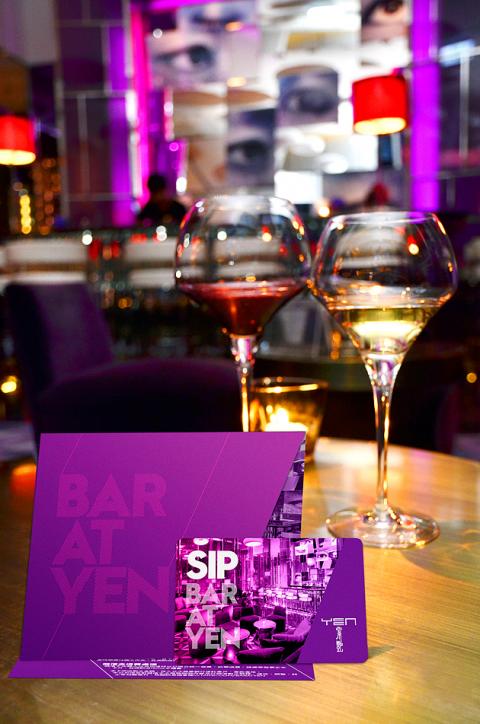W Taipei’s Yen Bar has introduced the Sip wine tasting card, which gives patrons an easy and affordable way to sample wines from leading vineyards. The Sip room, which has a view of Taipei 101, is home to Yen’s new Enomatic wine serving system, a machine that allows bottles of wine to be opened and protected from oxidation.
Guests use their pre-paid Sip card to dispense wine from the Enomatic, with amounts ranging from a 10ml taste to a full 150ml glass. The machine can hold up to 12 wines at a time. The selection will change each month. August’s list features libations from vineyards in France, Spain, Italy and Chile. Highlights include Domaine Chanson’s Beaune 1er Cru Clos des Mouches and Chateau La Lagune’s Moulin La Lagune from France and the Bordeaux-style Sassicaia, one of Italy’s most renowned wines.
Yen Bar is located on the top floor of W Taipei and features sweeping views of the city. In addition to the Enomatic machine’s offerings, the bar also serves more than 80 kinds of whisky, 90 cocktails and 100 kinds of wine, along with tapas inspired by Asian cuisine.

Photo Courtesy of W Taipei
The Sip tasting card is priced at NT$500 and up, and prices for each wine start at NT$70 for 10ml. Call (02) 7703-8887 or visit www.wtaipei.com/baratyen for more information.

This is the year that the demographic crisis will begin to impact people’s lives. This will create pressures on treatment and hiring of foreigners. Regardless of whatever technological breakthroughs happen, the real value will come from digesting and productively applying existing technologies in new and creative ways. INTRODUCING BASIC SERVICES BREAKDOWNS At some point soon, we will begin to witness a breakdown in basic services. Initially, it will be limited and sporadic, but the frequency and newsworthiness of the incidents will only continue to accelerate dramatically in the coming years. Here in central Taiwan, many basic services are severely understaffed, and

Jan. 5 to Jan. 11 Of the more than 3,000km of sugar railway that once criss-crossed central and southern Taiwan, just 16.1km remain in operation today. By the time Dafydd Fell began photographing the network in earnest in 1994, it was already well past its heyday. The system had been significantly cut back, leaving behind abandoned stations, rusting rolling stock and crumbling facilities. This reduction continued during the five years of his documentation, adding urgency to his task. As passenger services had already ceased by then, Fell had to wait for the sugarcane harvest season each year, which typically ran from

It is a soulful folk song, filled with feeling and history: A love-stricken young man tells God about his hopes and dreams of happiness. Generations of Uighurs, the Turkic ethnic minority in China’s Xinjiang region, have played it at parties and weddings. But today, if they download it, play it or share it online, they risk ending up in prison. Besh pede, a popular Uighur folk ballad, is among dozens of Uighur-language songs that have been deemed “problematic” by Xinjiang authorities, according to a recording of a meeting held by police and other local officials in the historic city of Kashgar in

It’s a good thing that 2025 is over. Yes, I fully expect we will look back on the year with nostalgia, once we have experienced this year and 2027. Traditionally at New Years much discourse is devoted to discussing what happened the previous year. Let’s have a look at what didn’t happen. Many bad things did not happen. The People’s Republic of China (PRC) did not attack Taiwan. We didn’t have a massive, destructive earthquake or drought. We didn’t have a major human pandemic. No widespread unemployment or other destructive social events. Nothing serious was done about Taiwan’s swelling birth rate catastrophe.